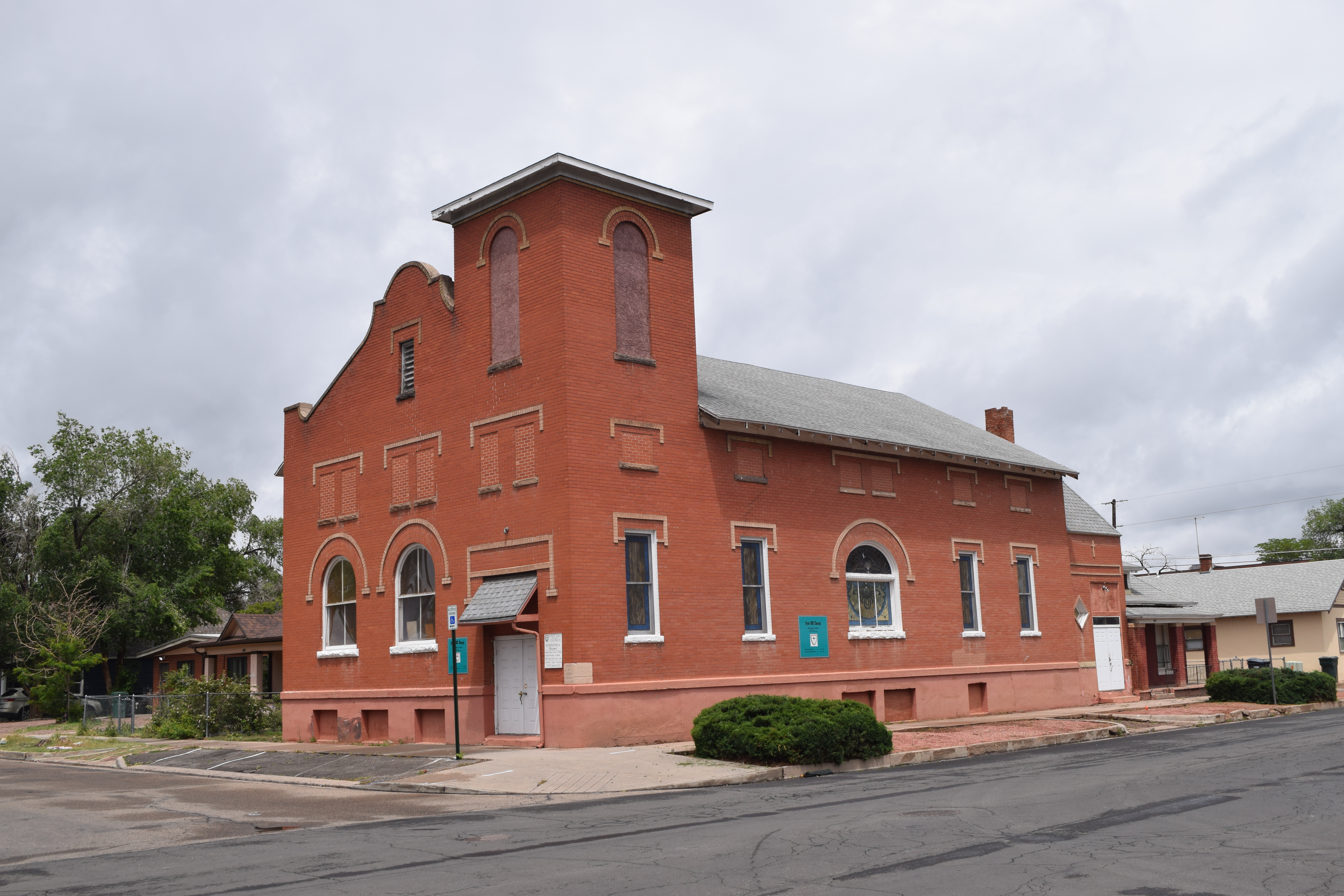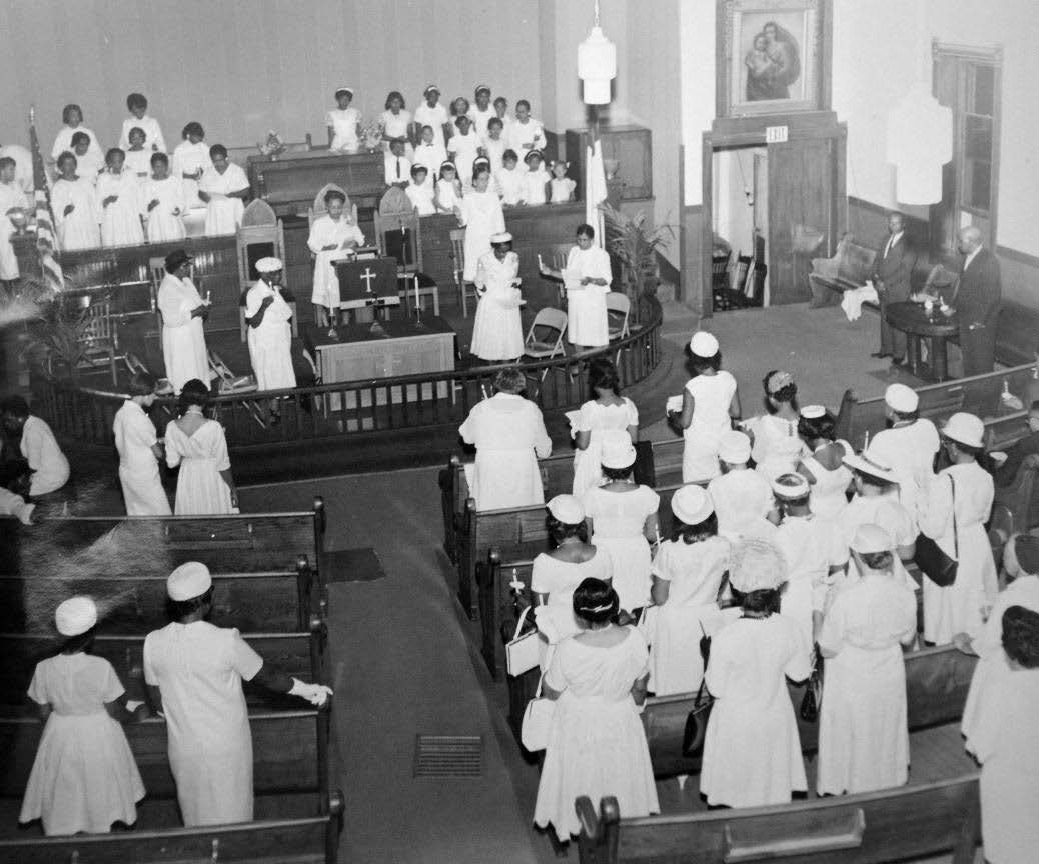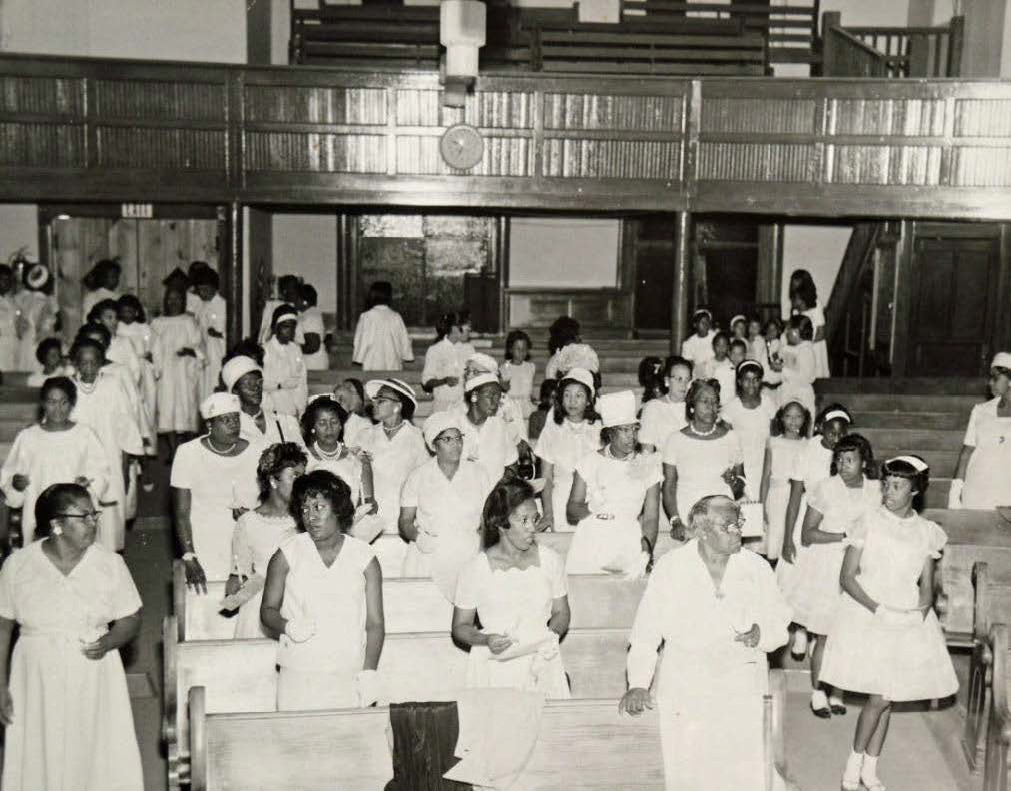
Story
Sanctuary, Refuge, and Shelter
A cornerstone of the African American community in Pueblo, First AME Church honors and shares its history as it pursues historic designation.
Ensconced in the soaring red brick walls that compose the striking First American Methodist Episcopal (AME) Church in Pueblo’s Bessemer neighborhood, an African American community forged their identity and created a space where they found fellowship. Today it’s an established landmark. Its curvilinear parapet and domineering tower—characteristic features of its mission revival style—continue to beckon Puebloans to its doors. In January 2023, the Colorado State Review Board, which is responsible for recommending to the National Park Service which sites in the state should be included in the National Register of Historic Places, voted to advance First AME to the roster in recognition of its role in the history of Pueblo’s Black community.

First AME Church in Pueblo, formerly St. Paul AME Church, is a fantastic Mission Revival Style Church in the heart of the Bessemer neighborhood in Pueblo.
African Americans migrated to Pueblo in fairly large numbers in the nineteenth century mainly to work for the Colorado Coal and Iron Company (which eventually became Colorado Fuel and Iron). Many had family roots in southern states and worked in the great steel works of the South. African Americans migrating to Pueblo did not escape racism. Segregation was enforced in public spaces like theaters, hotels, restaurants, swimming pools, and high schools, even in the West. Residential segregation through the process of “redlining” was rampant, and as a result, Black Puebloans were concentrated in certain neighborhoods like Bessemer. The community there found itself in need of a place of worship, and so began an effort to organize an AME congregation in Pueblo.
By 1899, Von Dickerson, John Moore, Gabriel Holmes, W.A. Holly, John K. Williams, and Doel Gray had organized an AME congregation that eventually became St. Paul American Methodist Episcopal Church (St. Paul AME was renamed First AME in 1976). In 1903, the group purchased property that could be its home. By October of that year, the congregation acquired the lot at the northeast corner of West Mesa Avenue and Pine Street where an existing simple white and black frame church already held services.

Cornerstone of the St. Paul AME Church.
A turning point for the church came in 1914 with the appointment of the determined and capable Reverend John Adams Sr. Educated at Lincoln University, Yale, Gammon Theological Seminary, and Campbell College, Rev. Adams led an acclaimed life. Although not formally educated in the law, he was admitted to the South Carolina bar in the 1900s, eventually arguing in front of the US Supreme Court to challenge the conviction of his client who had been found guilty by an all-white jury. He was a prominent civil rights advocate who organized marches in Omaha, where he was elected state senator. His reputation as an exemplary orator fighting to pass legislation to end discrimination in employment followed him throughout his life and works.
Invigorated by the leadership of John Adams Sr., planning for the construction of St. Paul AME progressed rapidly. On May 19, 1915, the cornerstone of the building was laid in a ceremony that was attended by the head of the Fifth Episcopal District of the AME Church who came from Chicago. The Denver Star noted that St. Paul AME was the second largest AME church in Colorado at the time, with Shorter AME in Denver being the largest.

Congregation of St. Paul AME Church at a worship service.
When construction of the church finally completed in 1916, St. Paul AME hosted the Colorado AME annual conference—an honor for the new church and congregation. Thereafter, the congregation became an anchor for the African American community in Pueblo. The thriving church, with 400 members at its height, served a vital role in the religious community, and held meetings of the Colorado AME annual conference in 1916, 1957, and 1971.
Black social justice organizations faced hostility and discrimination in Pueblo and beyond throughout the twentieth century, so having a place for the community to meet, discuss, and find fellowship helped to forge an identity and foster community activism. St. Paul AME quickly became a refuge, hosting civic and social groups and serving as a crucible of the fight for civil rights. The parsonage behind the church was listed in The Negro Motorist Green Book as the location of the local chapter of the National Association for the Advancement for Colored People. The Colored Women’s Clubs of Colorado, the Girl Reserves of the Young Women’s Christian Association, and the Black chapters of the Knights of Pythias from Colorado and Wyoming were just a few of the numerous groups that held meetings and receptions at St. Paul AME.

Congregation of St. Paul AME Church.
Though it was a hub for Black community and culture, the church also served the broader community of Pueblo. The distinctive and venerable building held musical performances, displays of art, banquets, and lectures on topics of the day. One of the more unique events was an annual gathering recognizing formerly enslaved people. Established by the Helpers Club of the church in 1934 to honor living Black Puebloans who were born into slavery, the Lincoln Day banquet was a yearly event through 1965. In keeping with its social justice mission, in 1970 the church held a symposium on civil rights that promoted speakers featuring Lt. Gov. George L. Brown, the first African American man elected to statewide office in Colorado. In 1976, after a meeting of the Colorado AME conference, St. Paul AME and St. John AME merged together to form First AME Church as a result of the demolition of St. John AME in the Bessemer neighborhood.
The historian Henry Louis Gates Jr. once said “The Black church has been a seminal force in shaping the history of the African American people. It’s the root out of which so many celebrated aspects of Black culture would branch. It’s the first institution that enslaved Black people and their freed descendants created, and it will become the longest lasting and without a doubt the most consequential.” First AME Church in Pueblo is the epitome of this statement, and continues to illustrate the congregation’s importance to the history of Pueblo and the state of Colorado.
